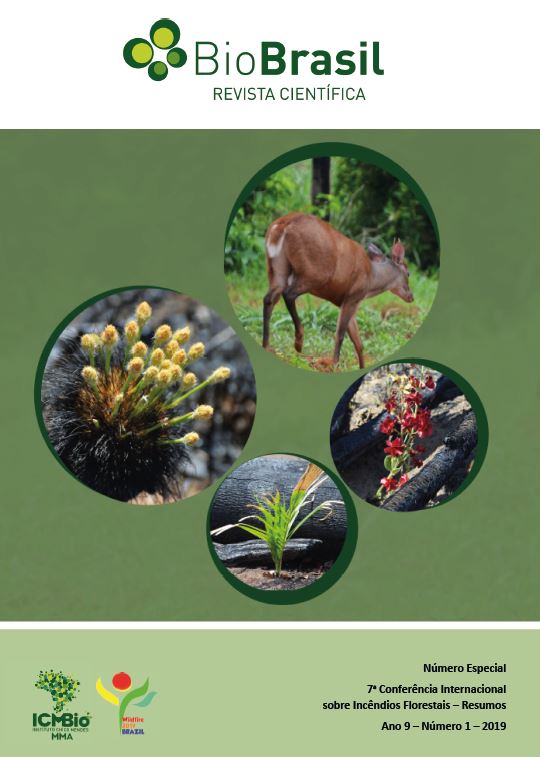State of knowledge and future challenges of wildfires in the European Alps
DOI:
https://doi.org/10.37002/biodiversidadebrasileira.v9i1.1145Palabras clave:
Integrated fire management, survey, mountain forests, EuropeResumen
In the last years devastating forest fires around the world pointed to the fact, that a further increase in frequency and severity of wildfires is likely due to the anthropogenic climate change. Higher temperatures in combination with longer heatwaves, the change in forest management and more intense recreational use of forests are generally known causes that increase the probability of more and more intense wildfires. Recent forest fire events proofed quite well, that forest fires become an urgent issue in the European Alpine region as well. This leads to damages of protection forests, increasing natural hazards (avalanches, rockfall, mudslides or soil erosion) and results in high costs for restoration measures. This study identifies the main processes, legal bases and major challenges in fire prevention, fire suppression and land restoration after fires in the Alpine region. Based on an online survey conducted in the alpine countries Austria, Slovenia, Italy, France, Germany, Liechtenstein and Switzerland we present the main driving factors for fire ignition, analyze bottlenecks and shortcomings in fire suppression activities and propose possible options for an integrated fire management in the future. The survey is tailored towards three groups: action forces, authorities and researchers. Especially protection forests dominated by coniferous tree species on southern slopes are at risk. Many parts of the European Alpine mountain forests are dominated by Norway spruce, a tree species that already shows a high vulnerability due to storm damages and bark beetle outbreaks. A more intense use of forests as recreational area may increase the likelihood of wildfire ignitions through negligence and carelessness. The wildland-urban-interface (WUI) has to be considered in the future as wildfires affect urban areas more easily through the intensified land conversion of forest and agricultural land caused by the encroachment of larger cities in alpine valleys. Furthermore costs of firefighting, restoration of forests and necessary protective measures can rise dramatically. An adapted forest management, like the change in tree species composition, is also an essential part of an integrated approach to prevent devastating and costly wildfires.
Descargas
Descargas
Publicado
Número
Sección
Licencia
Derechos de autor 2021 Biodiversidade Brasileira - BioBrasil

Esta obra está bajo una licencia internacional Creative Commons Atribución-NoComercial-SinDerivadas 4.0.
Os artigos estão licenciados sob uma licença Creative Commons Atribuição-NãoComercial-SemDerivações 4.0 Internacional (CC BY-NC-ND 4.0). O acesso é livre e gratuito para download e leitura, ou seja, é permitido copiar e redistribuir o material em qualquer mídia ou formato.











